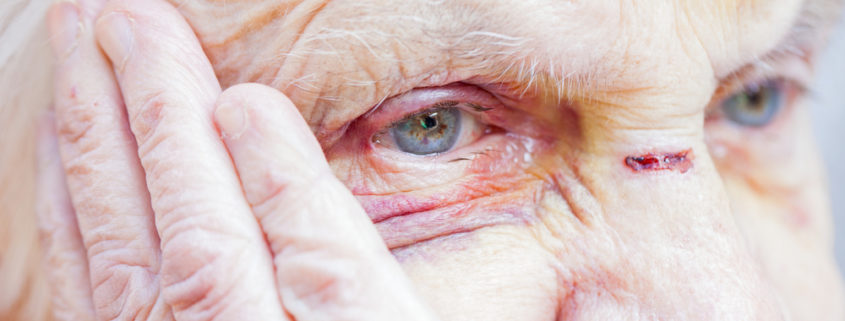Fighting Back Against Elder Abuse
Elder abuse is something most families may not consider when faced with having to place a loved one in a nursing home. If a facility looks bright and clean and the staff is friendly, that may give families the confidence that their loved one’s needs will be adequately taken care of, and that they will be safe with trusted caregivers.
Sadly, that is not always the case. Stories in the news too frequently alert us to alarming reports of nursing home negligence—not just neglect, but also verbal, physical, and sexual abuse, intentional overmedication, and robbery.
According to the Centers for Disease Control, there are 1.4 million Americans living in 17,000 nursing homes in the U.S., with almost 70 percent of those facilities run by for-profit corporations. When nursing homes have pressure from corporate owners to meet ambitious profit goals, budget considerations may take precedence over the care and staffing requirements of their most vulnerable residents.
In the CDC publication Elder Abuse Surveillance: Uniform Definitions and Recommended Core Data Elements, elder abuse is defined as “An intentional act or failure to act by a caregiver…that causes or creates a risk of harm to an older adult.”
When family or friends of a nursing home resident suspect their loved one may have been harmed, they often find it difficult to prove, especially if the elderly resident has difficulty communicating.
Some families are fighting back against elder abuse in nursing homes by placing cameras in the rooms of their loved ones to monitor the interactions with—and care of—the elderly resident. This approach can bring peace of mind to a family, as it allows them to provide supervision for their elderly loved one’s care. In the best case, they would be reassured that their family member is receiving the care and compassion they deserve. In the event that this is not the case, the family would be alerted to the situation and may take timely action to correct it.
If the presence of a camera is known to nursing home staff, it could serve as a deterrent to abusive activity. In the case of an accident, the recording could help clarify what happened and could prevent nursing home staff from being wrongly accused. On the other hand, if the recording were to document actual abuse, it could serve as proof if civil or criminal action were to become necessary.
Placing cameras in nursing homes to monitor activity is not without controversy, however. In general, the nursing home industry is opposed to it, citing concerns about privacy of the resident, any roommates, and staff.
To date seven states have passed laws allowing the use of cameras in nursing homes. Two states—New Jersey and Wisconsin—initiated a program to loan secret cameras to families to assist in documenting suspected abuse. State laws and guidelines vary regarding permission and policies for placing cameras in nursing homes. For example, in Texas, the law does not apply to private facilities, only to state-supported living centers.
In Arizona there is no current legislation regarding video cameras in nursing homes. Families who want to place a camera in a loved one’s room may want to determine the facility’s policies before taking such action.
If the nursing home allows the placement of a camera, there will be concerns such as privacy to consider. For example, if there is more than one resident in a room, you will be required to get consent from them, or from their guardians or Powers of Attorney.
As the U.S. population continues to age (by 2030 1 in 5 will be age 65 or older), the importance of good nursing home care will be a great concern for many Americans. As opportunities will continue to exist for abuse, using tools like cameras for accountability will help ensure that vulnerable nursing home residents are treated with compassion and respect.
If a loved one has been a victim of elder abuse or negligence, contact the experienced and compassionate attorneys at Hollingsworth Kelly for a free consultation.




